Deserts, often perceived as vast, empty expanses, hide some of the most fascinating and mysterious natural formations on Earth. From eerie fairy circles in Namibia to the fiery Darvaza Gas Crater in Turkmenistan, these landscapes are filled with wonders that defy explanation and ignite the imagination. This article delves into the top 19 most mysterious desert formations, exploring the unique characteristics and enigmatic origins of these incredible natural phenomena. Each of these formations tells a story of the powerful and often perplexing forces of nature, inviting us to uncover the secrets they hold within their arid realms.
Fairy Circles (Namib Desert, Namibia)
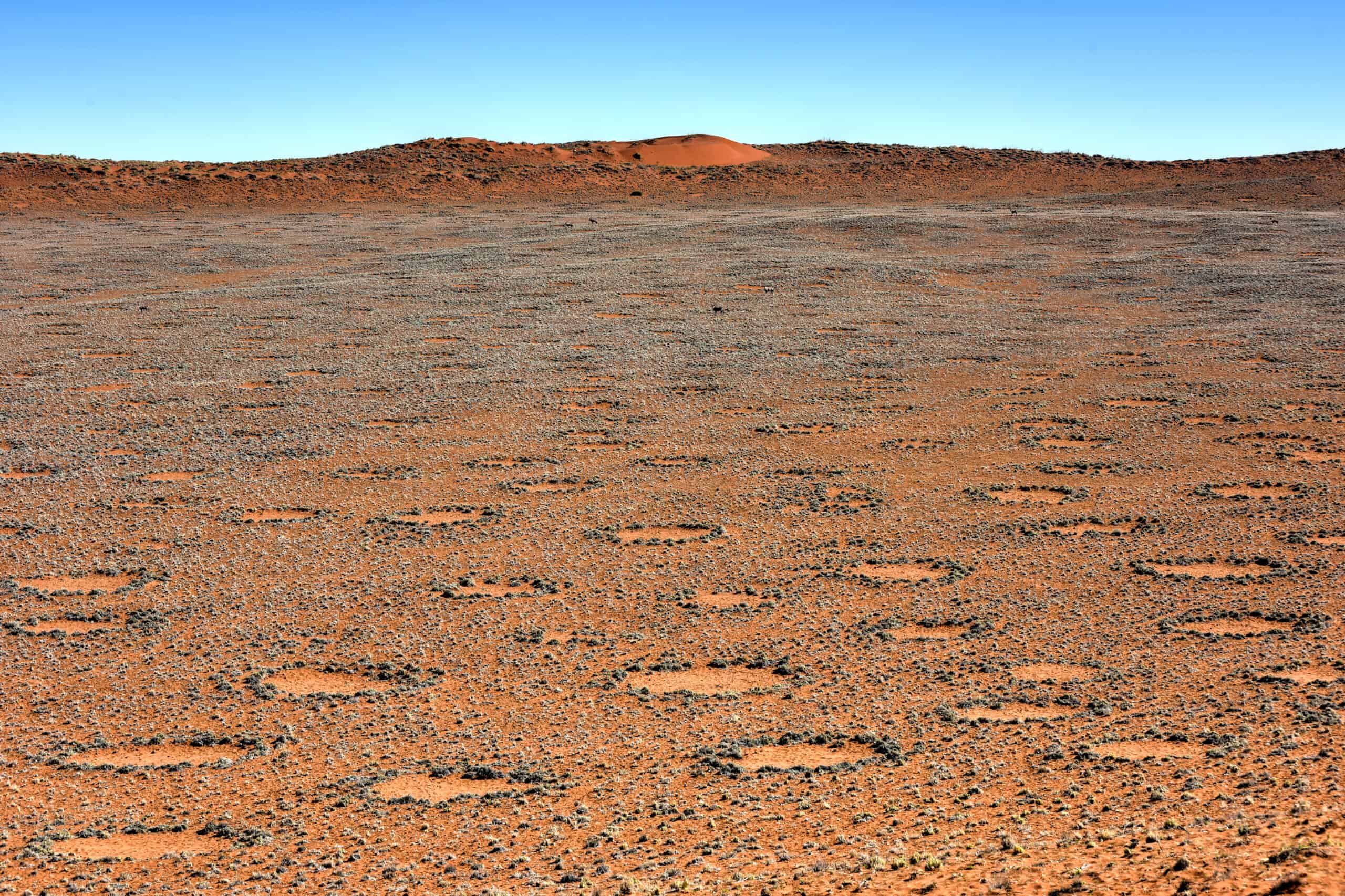
The Namib Desert is home to the enigmatic fairy circles, mysterious circular patches of barren land surrounded by grass. These formations, ranging from 1.5m to 25m in diameter, have baffled scientists for decades. Theories about their origin range from termite activity to vegetation self-organization, but no consensus has been reached. Local Himba people believe they are footprints left by their god, Mukuru, adding a mystical dimension to these curious circles. The fact that similar formations have been found in Australia only deepens the mystery, as the exact cause remains elusive despite extensive research. The fairy circles’ near-perfect circular shape and their persistence in one of the world’s most arid environments only add to their mystique, making them a fascinating subject of both local folklore and scientific inquiry.
Darvaza Gas Crater (Karakum Desert, Turkmenistan)
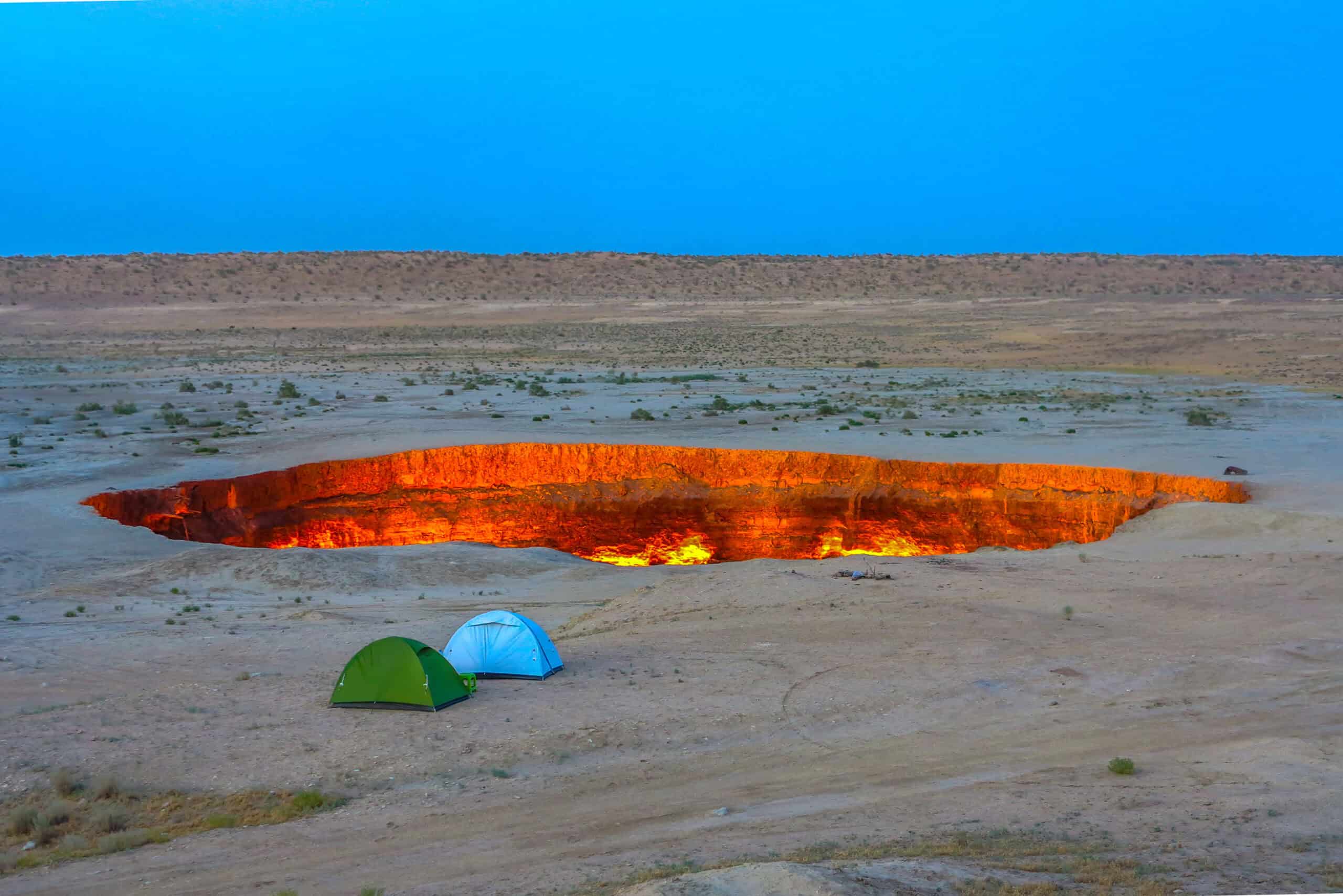
Known as the “Door to Hell,” the Darvaza Gas Crater is a fiery pit that has been burning for decades. This natural gas field collapsed into a cavern, which geologists set on fire to prevent the spread of methane gas. The result is a mesmerizing, hellish landscape that glows with an eerie light, making it one of the most mysterious desert formations in the world. The continuous burning and the crater’s remote location in the Karakum Desert add to its enigmatic allure, attracting adventurous travelers and researchers alike. The crater, measuring about 70 meters in diameter and 20 meters deep, is a stark reminder of the powerful natural forces at work beneath the Earth’s surface, and its unending flames evoke both wonder and a sense of the supernatural.
Racetrack Playa (Death Valley, USA)
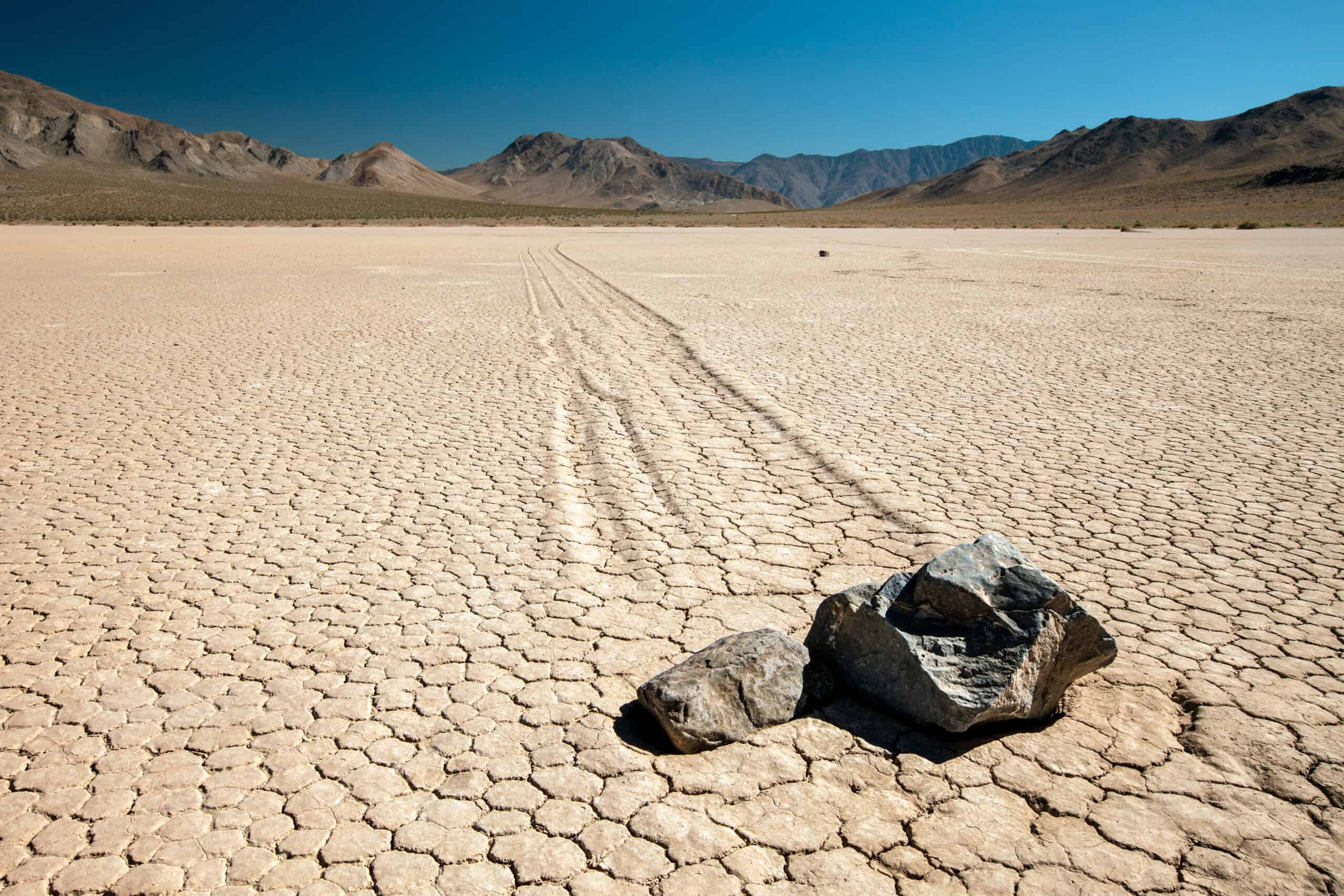
In California’s Death Valley, the Racetrack Playa is famous for its “sailing stones,” large rocks that mysteriously move across the dry lake bed, leaving long tracks behind them. Despite decades of speculation, it wasn’t until recent studies that scientists proposed that a rare combination of freezing temperatures, thawing ice, and light winds might cause the stones to glide. This natural phenomenon creates an eerie and perplexing landscape, with rocks seeming to defy gravity and logic. The playa itself is a flat, dry lake bed that stretches for miles, and the sight of these heavy stones moving on their own, without any visible force, has long intrigued both visitors and scientists, adding to the desert’s mysterious reputation.
Salar de Uyuni (Bolivia)
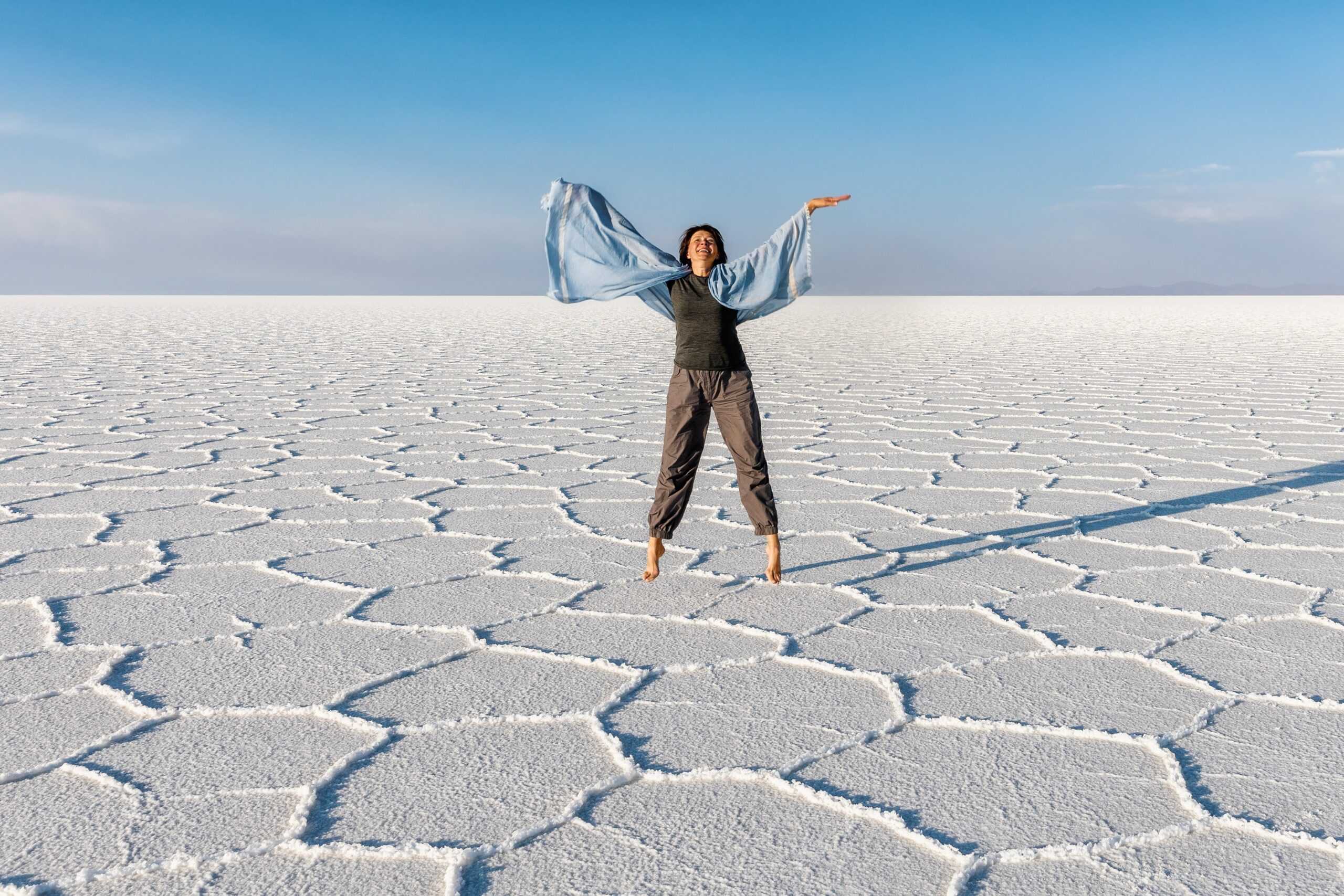
The Salar de Uyuni in Bolivia is the world’s largest salt flat, spanning over 10,000 square kilometers. This otherworldly landscape was formed by the evaporation of prehistoric lakes, leaving behind a vast expanse of salt crust. During the rainy season, a thin layer of water transforms the flat into an enormous mirror, reflecting the sky and creating a surreal visual effect that makes it appear endless. This mirror effect is so perfect that it has been used for calibrating satellites. The salt flat’s unique and extreme environment has also made it a site for lithium mining, adding another layer of intrigue to its scientific and economic significance.
Lençóis Maranhenses (Brazil)
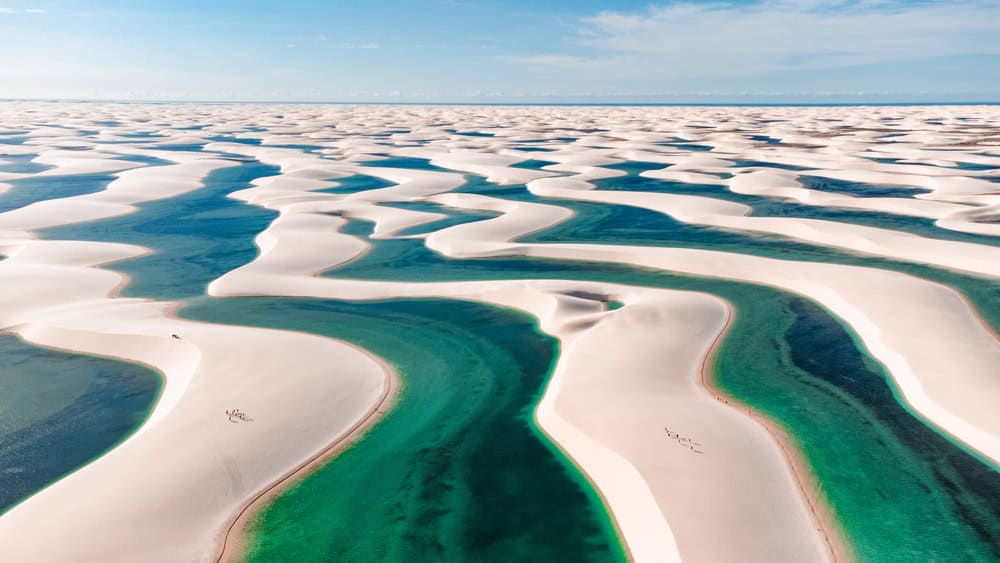
Situated along the northern coast of Brazil, Lençóis Maranhenses is a desert unlike any other. Characterized by vast, rolling white sand dunes interspersed with crystal-clear freshwater lagoons, this unique landscape is formed by seasonal rainwater collecting in the valleys between the dunes. The resulting lagoons, which can be as deep as 3 meters, create a striking contrast with the arid sand, making it look like a sheet of linens spread across the land. This phenomenon only occurs during the rainy season, turning the desert into a stunning, transient oasis. The interplay of wind and water creates an ever-changing, ethereal landscape that challenges traditional perceptions of deserts as solely arid expanses.
Antelope Canyon (Arizona, USA)
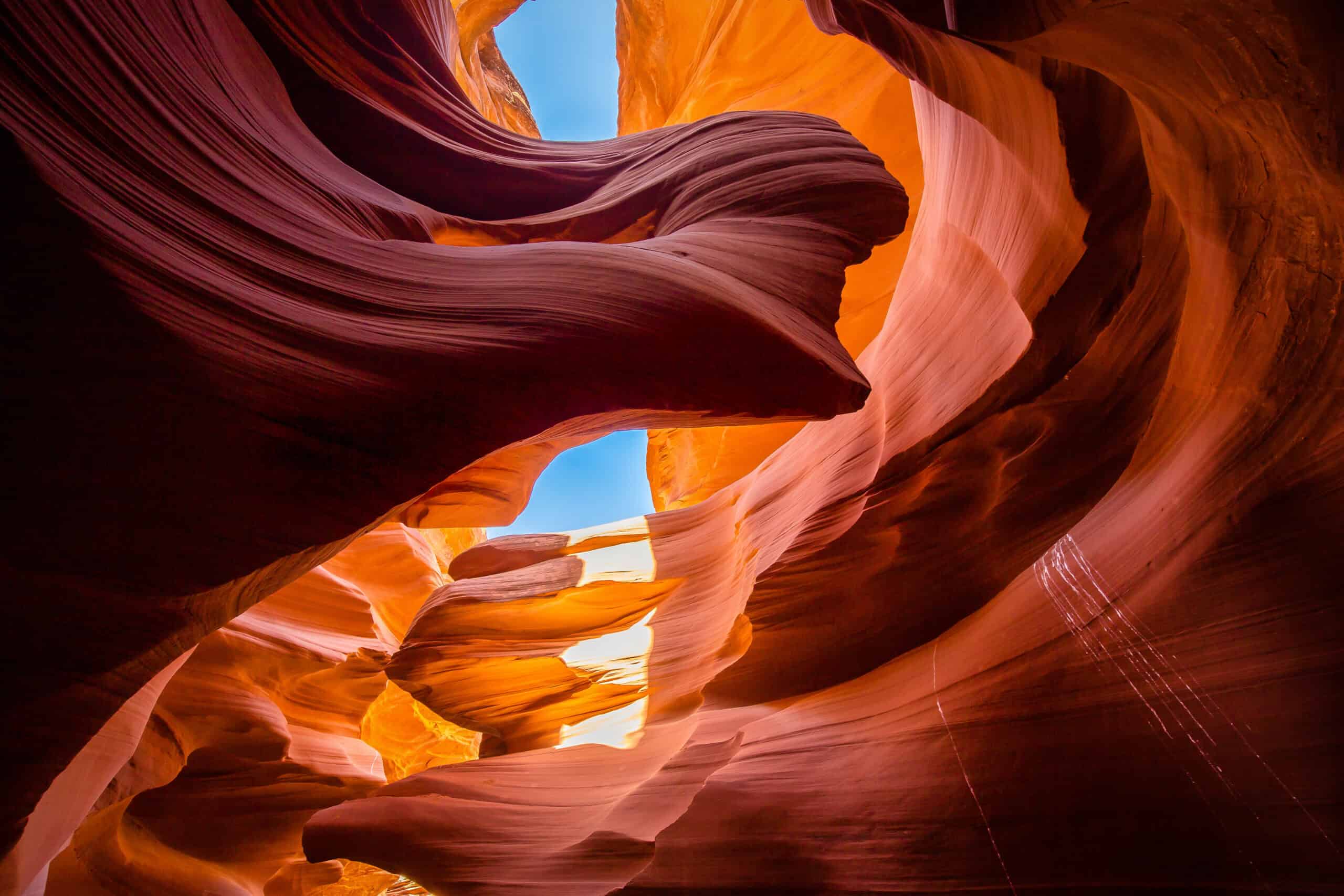
Antelope Canyon, located in the Arizona desert, is renowned for its stunningly beautiful slot canyons, which are narrow, winding passageways carved into the sandstone by flash floods. These canyons are known for their wave-like structure and the beams of light that shine down into the openings of the canyon, illuminating the red, orange, and purple hues of the rock walls. The intricate shapes and patterns on the canyon walls, formed by centuries of water erosion, create a surreal, almost otherworldly atmosphere. Visitors often describe the experience of walking through Antelope Canyon as spiritual, with the play of light and shadow enhancing the canyon’s mysterious and mesmerizing beauty.
White Desert (Egypt)
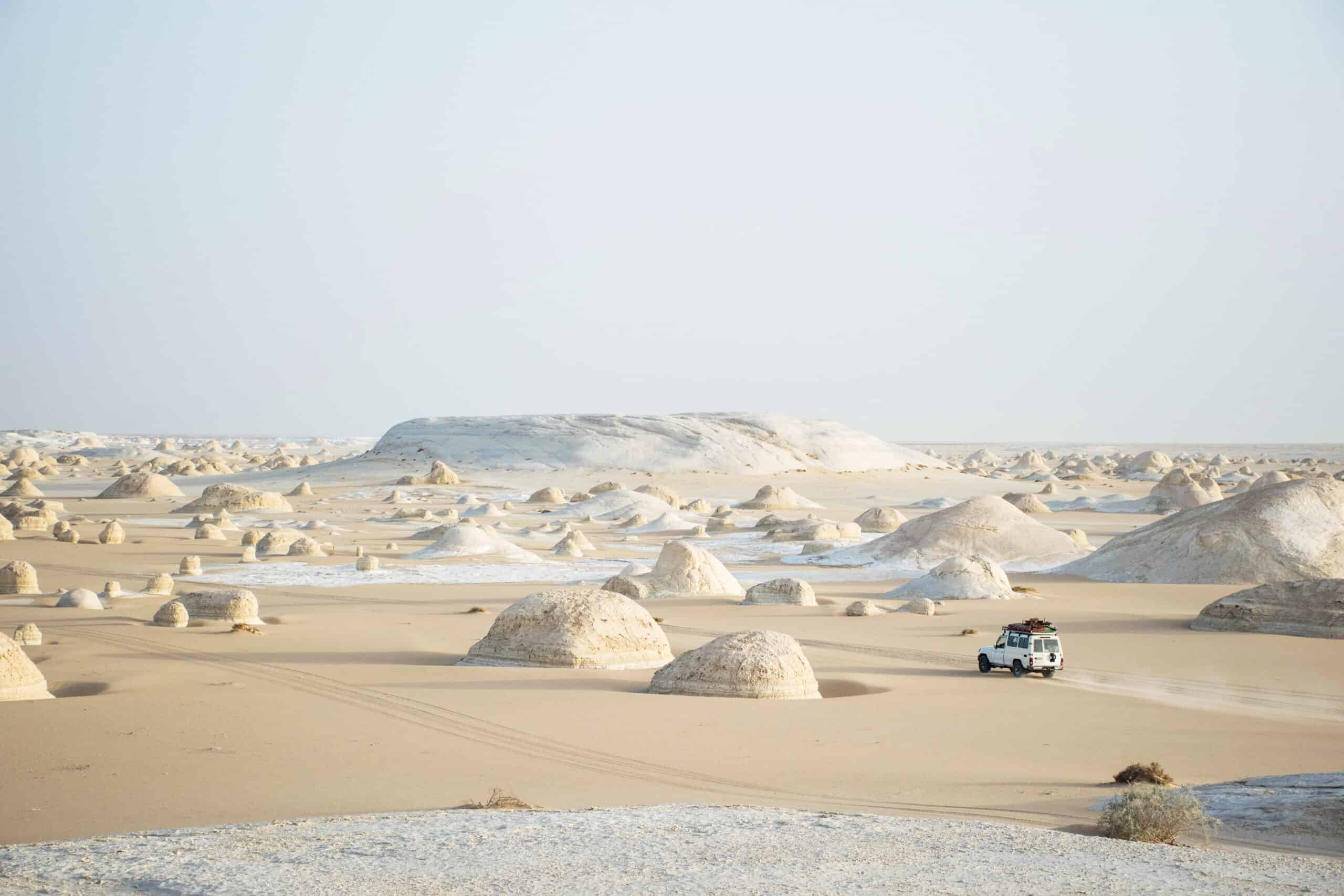
The White Desert, or Sahara el Beyda, located in Egypt’s Western Desert, is famous for its chalk-white rock formations that stand in stark contrast to the surrounding yellow sand. These formations, shaped by millennia of wind and sand erosion, resemble surreal sculptures, including shapes that look like giant mushrooms, spires, and even animals. The landscape is particularly striking at sunrise and sunset when the low angle of the sun casts long shadows and the white rocks take on a golden hue. The White Desert’s unique and otherworldly appearance makes it one of the most mysterious and visually captivating deserts in the world.
Valley of the Moon (Atacama Desert, Chile)
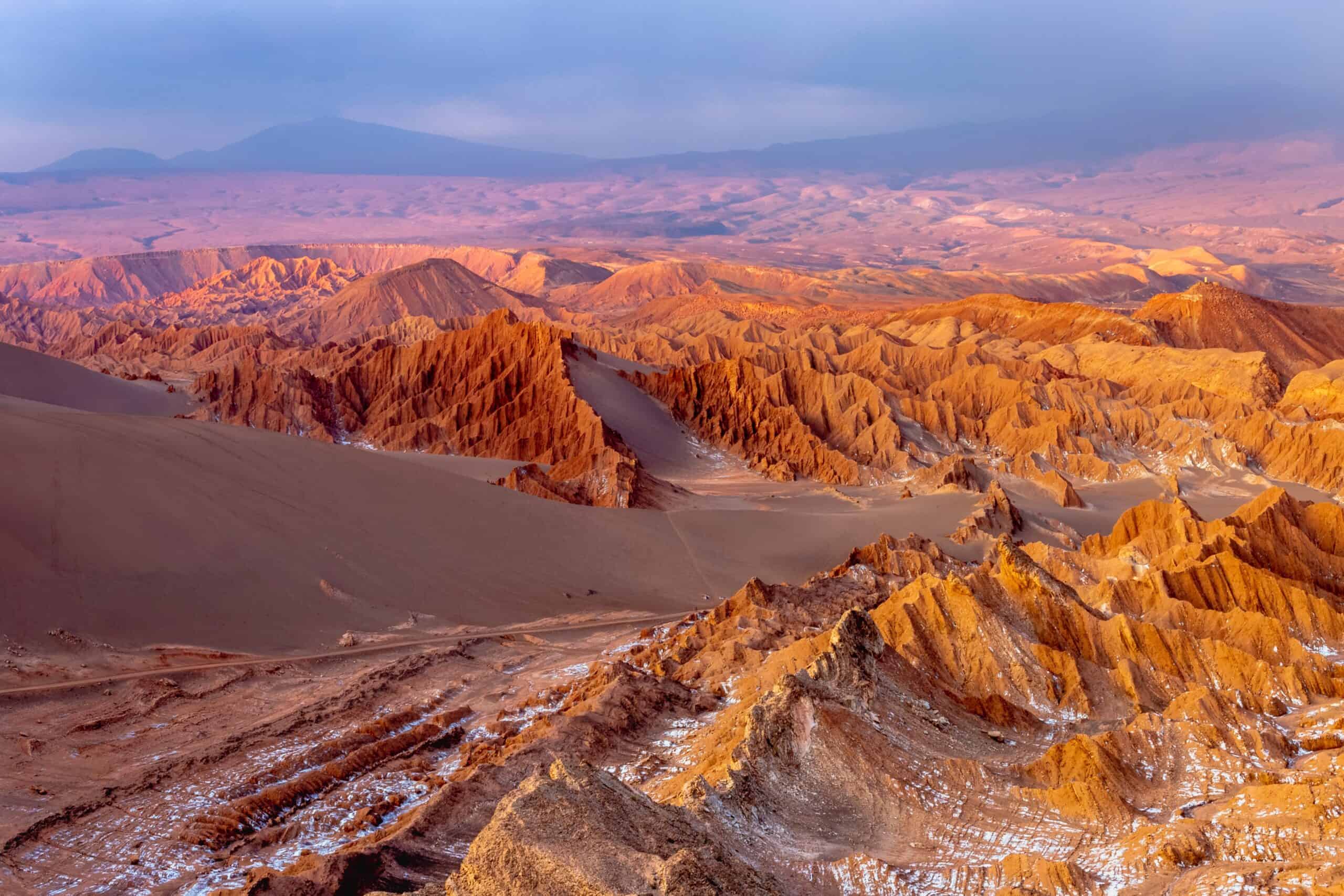
Nestled within the Atacama Desert, the Valley of the Moon (Valle de la Luna) is an eerie landscape of rugged mountains, wind-eroded canyons, and unique rock formations that give it a lunar-like appearance. The desert is one of the driest places on Earth, with some areas receiving less than 1mm of rainfall annually. The valley’s surreal landscape, with its salt flats, caves, and jagged peaks, has been shaped over thousands of years by the forces of wind and water. The dramatic scenery, combined with the near-total absence of life, creates an otherworldly environment that is both haunting and fascinating. The Valley of the Moon’s extreme conditions and stark beauty make it a popular destination for adventurers and photographers seeking to capture its mysterious allure.
Wave Rock (Western Australia)
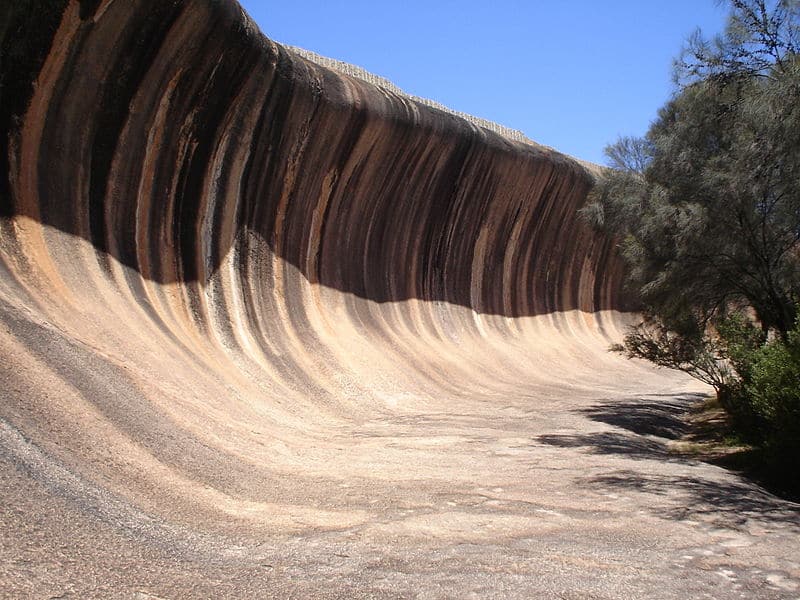
Wave Rock is a natural rock formation located in Hyden, Western Australia, resembling a giant ocean wave about to crash. This granite cliff, standing 15 meters high and stretching 110 meters long, was formed over millions of years through weathering and erosion. The wave-like shape and the distinct bands of color on the rock are caused by the gradual runoff of water and the deposition of minerals. Wave Rock’s unique appearance and the geological processes that created it make it a significant and mysterious natural wonder. The formation attracts thousands of visitors each year, drawn by its striking resemblance to a frozen wave and its intriguing geological history.
Painted Desert (Arizona, USA)
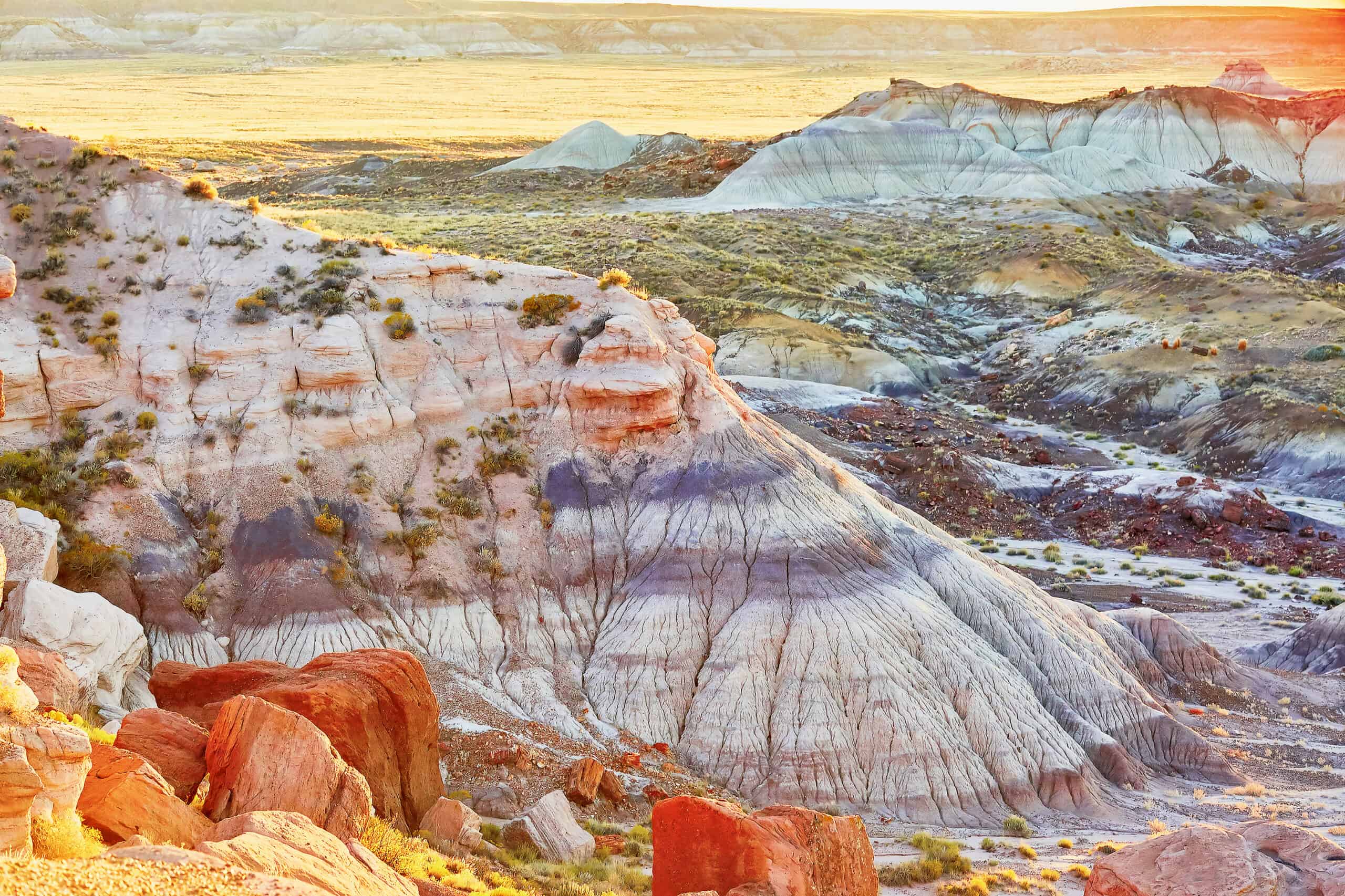
The Painted Desert in Arizona is renowned for its vibrant and varied colors, ranging from deep lavenders to rich reds and oranges. This stunning landscape is part of the larger Petrified Forest National Park and is characterized by its stratified layers of sedimentary rock and clay, which have been eroded over millions of years. The colors of the desert shift and change with the angle of the sun, creating a constantly evolving and mesmerizing panorama. The Painted Desert’s unique and dramatic hues, combined with its ancient geological formations, make it one of the most visually captivating and mysterious deserts in the world.
Bisti/De-Na-Zin Wilderness (New Mexico, USA)
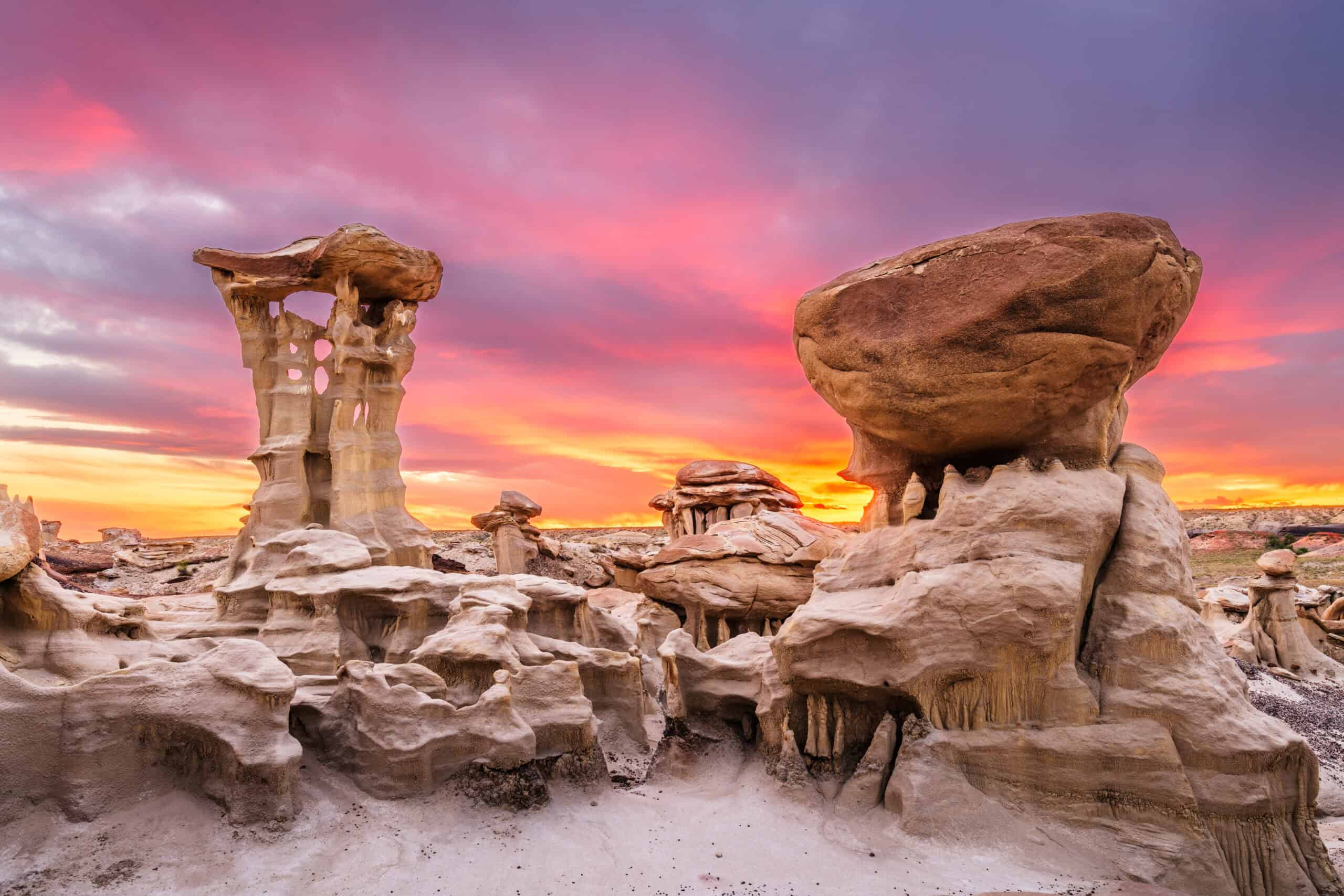
The Bisti/De-Na-Zin Wilderness, located in the high desert of New Mexico, is a surreal landscape filled with bizarre rock formations, hoodoos, and petrified wood. The area’s unique geology, shaped by erosion and weathering, creates a landscape that looks like it belongs on another planet. The rock formations, with their unusual shapes and vibrant colors, are the result of millions of years of sediment deposition and erosion. The wilderness area’s remote location and otherworldly scenery make it a fascinating and mysterious destination for those seeking to explore one of the most unique desert landscapes in the United States.
Guelta d’Archei (Sahara Desert, Chad)
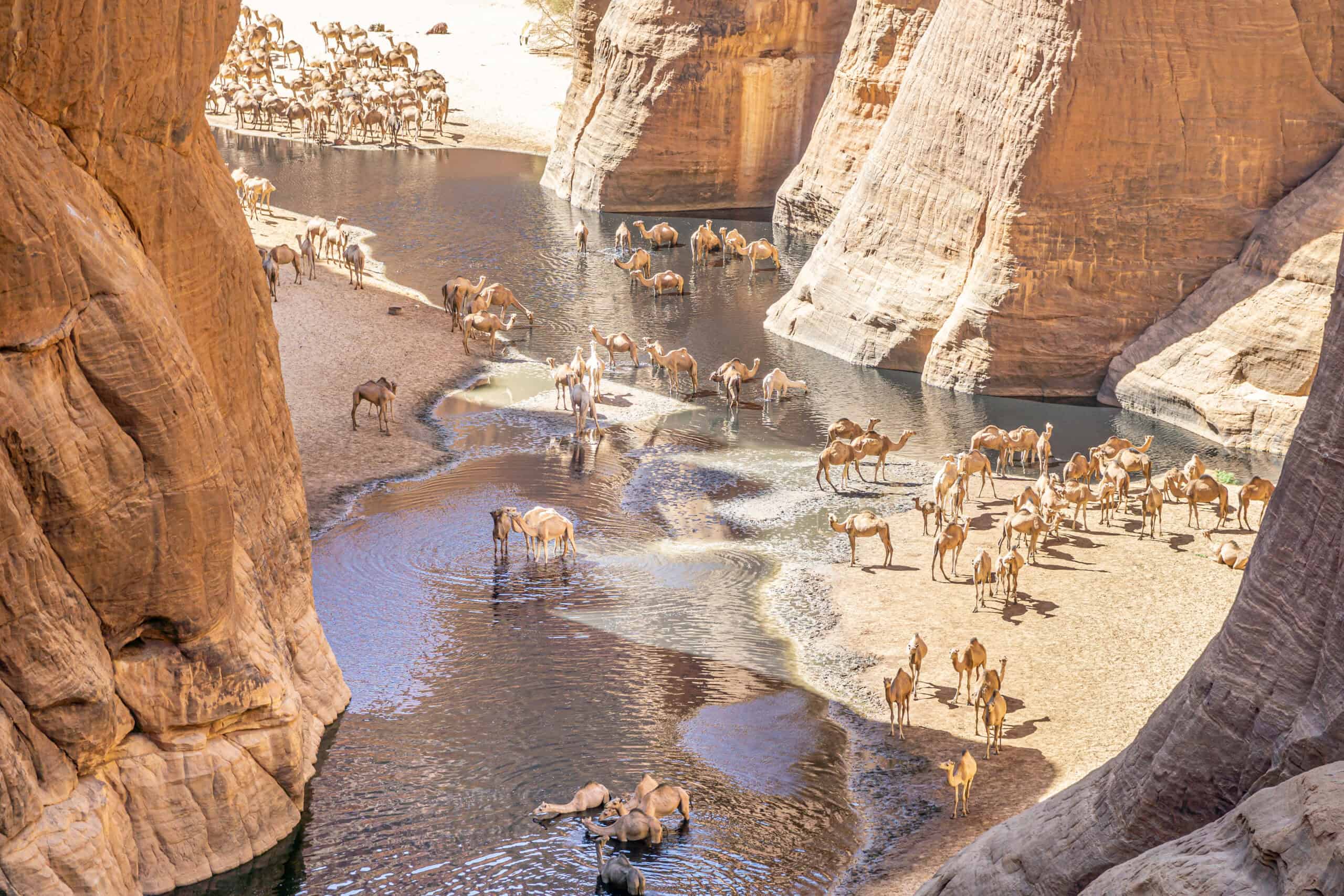
The Guelta d’Archei is a hidden oasis nestled in the Ennedi Plateau of the Sahara Desert in Chad. This ancient guelta, a type of desert pond, is fed by underground rivers and is known for its dramatic canyon walls and the presence of crocodiles, a rare sight in the Sahara. The oasis has served as a vital water source for nomadic tribes and their livestock for centuries. The stark contrast between the verdant guelta and the surrounding desert, combined with its historical significance and the mystery of its enduring water supply, makes the Guelta d’Archei one of the most intriguing desert formations in the world.
Tsingy de Bemaraha (Madagascar)
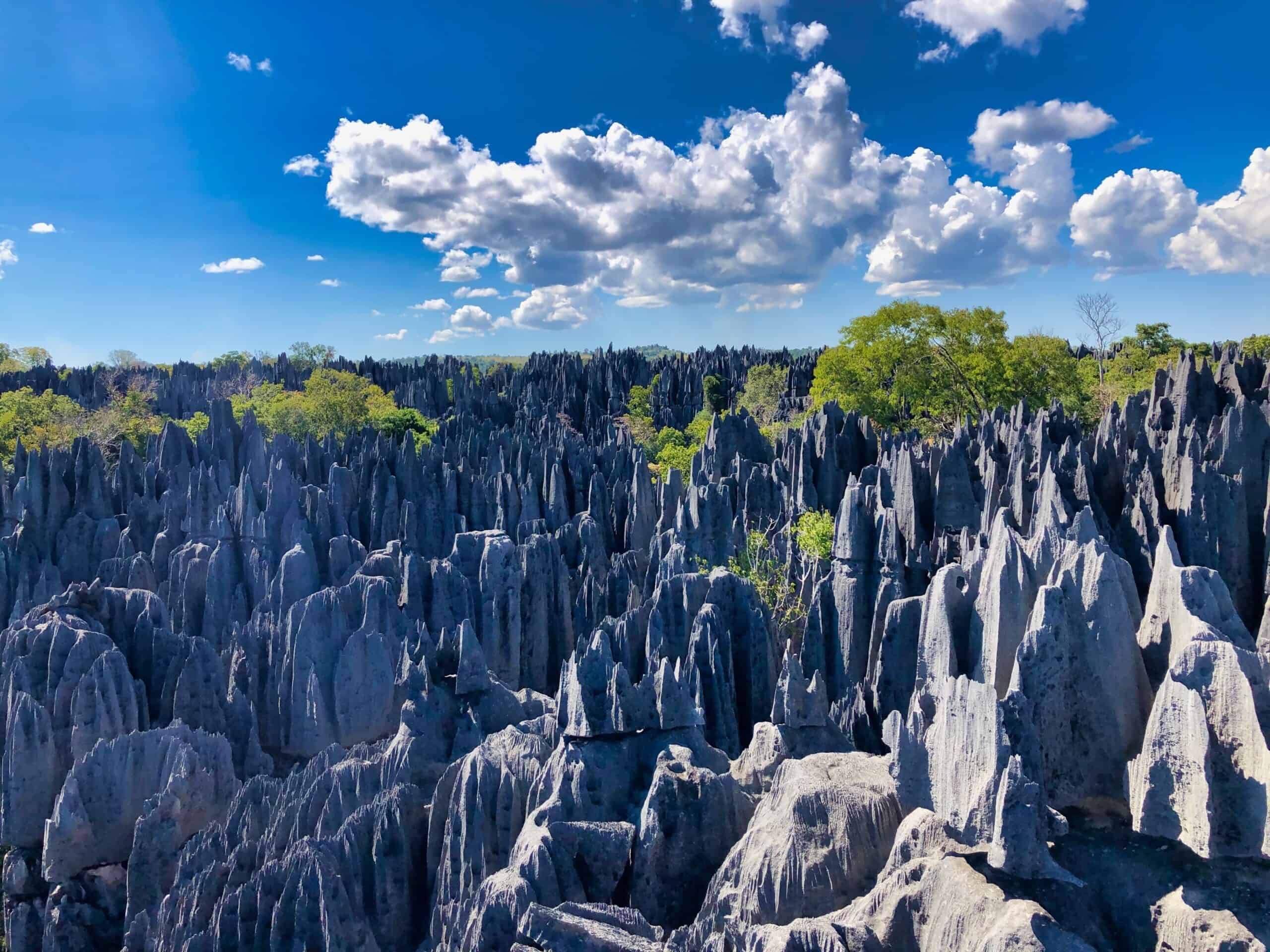
The Tsingy de Bemaraha is a unique limestone formation located in western Madagascar. This UNESCO World Heritage site is characterized by its labyrinthine network of razor-sharp limestone pinnacles, canyons, and gorges. The name “tsingy” translates to “where one cannot walk barefoot,” reflecting the challenging and treacherous terrain. The area’s complex geology has created a range of microhabitats, supporting a diverse array of flora and fauna, many of which are endemic to the region. The Tsingy de Bemaraha’s dramatic landscape, biological diversity, and the mystery of its formation make it a fascinating and mysterious destination.
Eye of the Sahara (Mauritania)
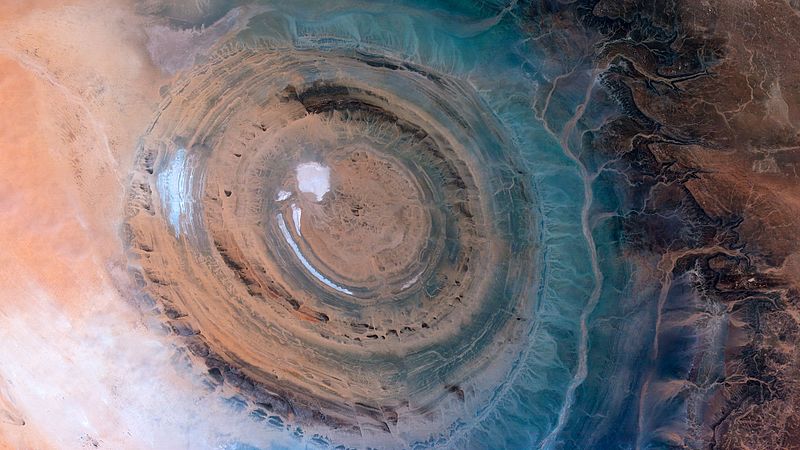
Also known as the Richat Structure, the Eye of the Sahara is a massive circular formation located in the Sahara Desert in Mauritania. This geological wonder, measuring approximately 50 kilometers in diameter, resembles a giant bullseye from space. The origins of the Eye of the Sahara are still debated, with theories ranging from an impact crater to a deeply eroded dome. The structure’s concentric rings and the surrounding barren desert create a striking visual contrast, making it one of the most mysterious and recognizable desert formations. The Eye of the Sahara’s enigmatic appearance and the ongoing scientific debate about its origin add to its allure and intrigue.
Shilin Stone Forest (China)
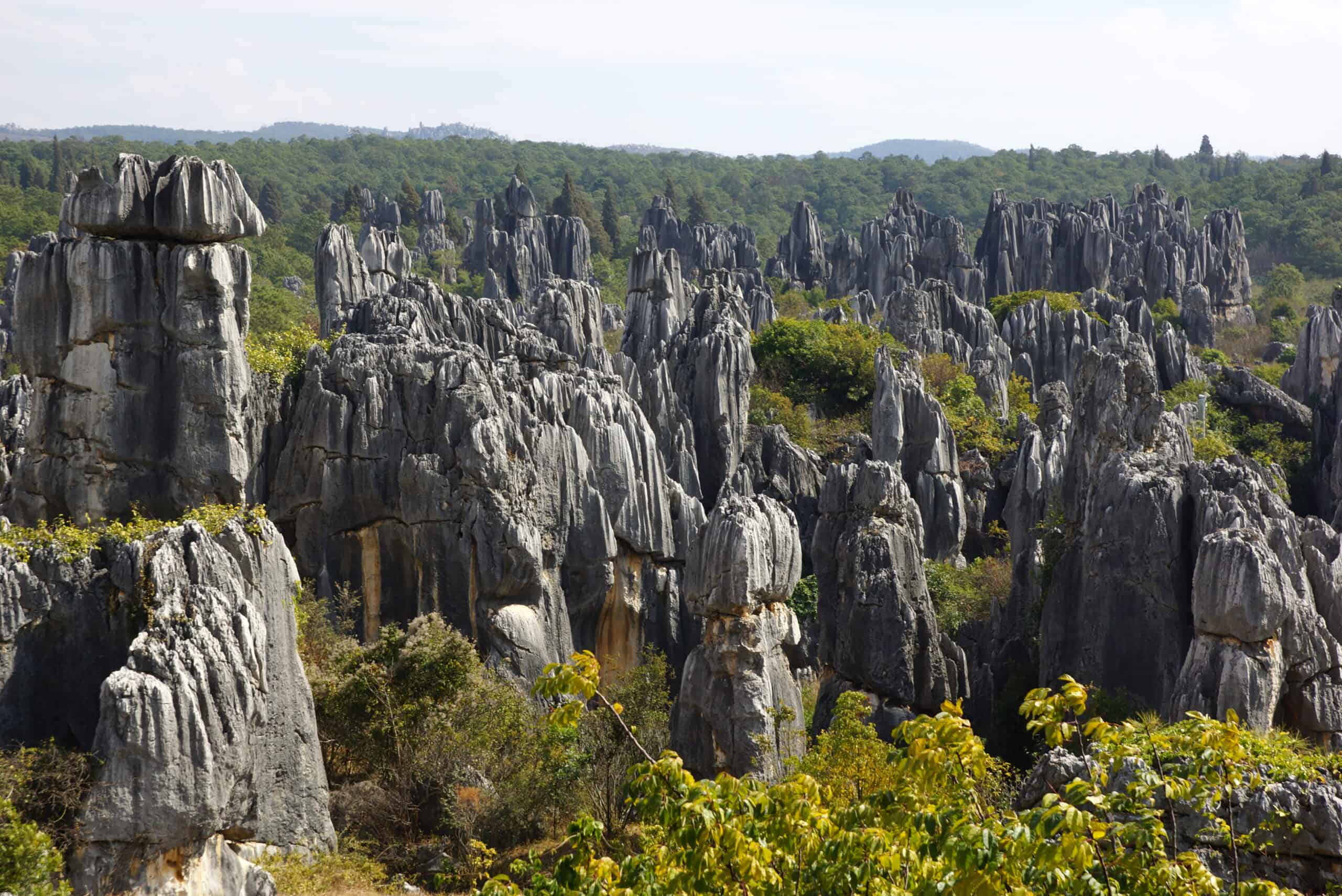
The Shilin Stone Forest, located in the Yunnan Province of China, is a spectacular karst landscape featuring towering limestone pillars that resemble a forest of stone. These formations were created by the erosion of limestone over millions of years, resulting in a maze of jagged peaks, caves, and underground rivers. The stone forest is not only a natural wonder but also holds cultural significance for the local Yi people, who celebrate their traditional Torch Festival here. The Shilin Stone Forest’s unique and dramatic landscape, combined with its cultural importance and geological history, makes it one of the most mysterious desert formations in the world.
Chocolate Hills (Philippines)
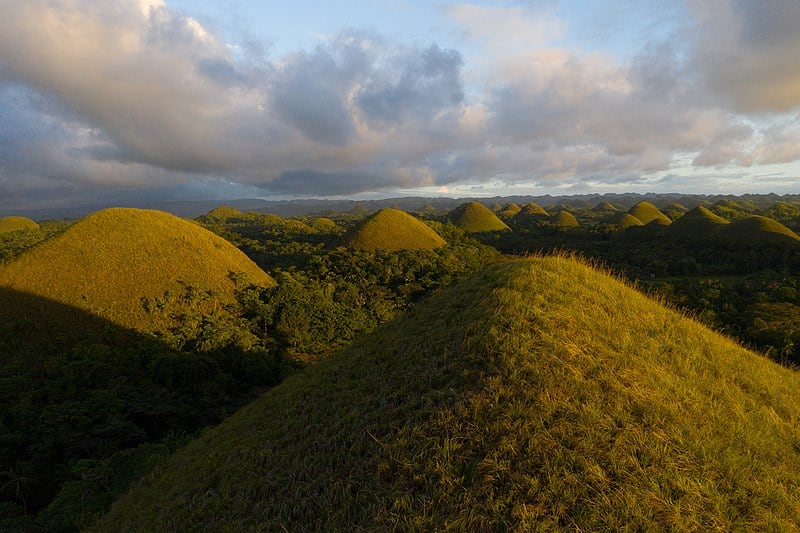
The Chocolate Hills, located on the island of Bohol in the Philippines, are a series of over 1,200 symmetrical, conical mounds that turn brown during the dry season, resembling giant chocolate drops. These limestone formations, covered in green grass, were created through the weathering of marine limestone. The uniformity and sheer number of these hills make them a geological wonder and a popular tourist attraction. Local legends attribute the hills to the tears of a giant or the remnants of a giant’s battle. The Chocolate Hills’ unique appearance and the mystery of their formation make them one of the most intriguing desert-like landscapes in the world.
Pinnacles Desert (Australia)
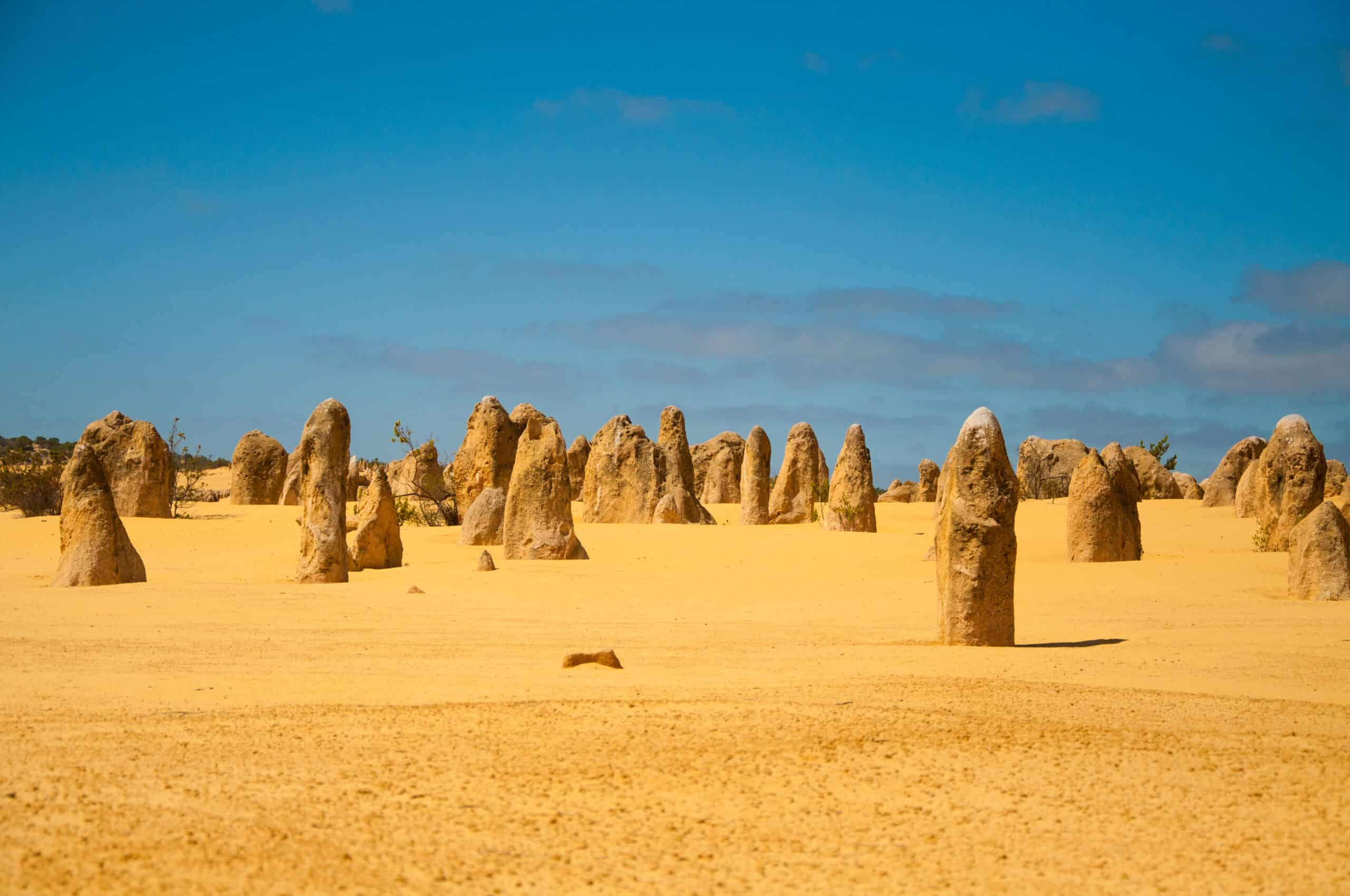
The Pinnacles Desert, located in Nambung National Park in Western Australia, is known for its thousands of limestone pillars that rise from the sandy desert floor. These eerie formations, some reaching up to 5 meters in height, were formed from ancient seashells that were broken down into lime-rich sand and then solidified over thousands of years. The landscape is particularly striking at dawn and dusk when the low angle of the sun casts long shadows across the desert. The Pinnacles Desert’s unique and surreal landscape, combined with its geological significance, makes it one of the most mysterious and captivating desert formations in the world.
Skeleton Coast (Namib Desert, Namibia)
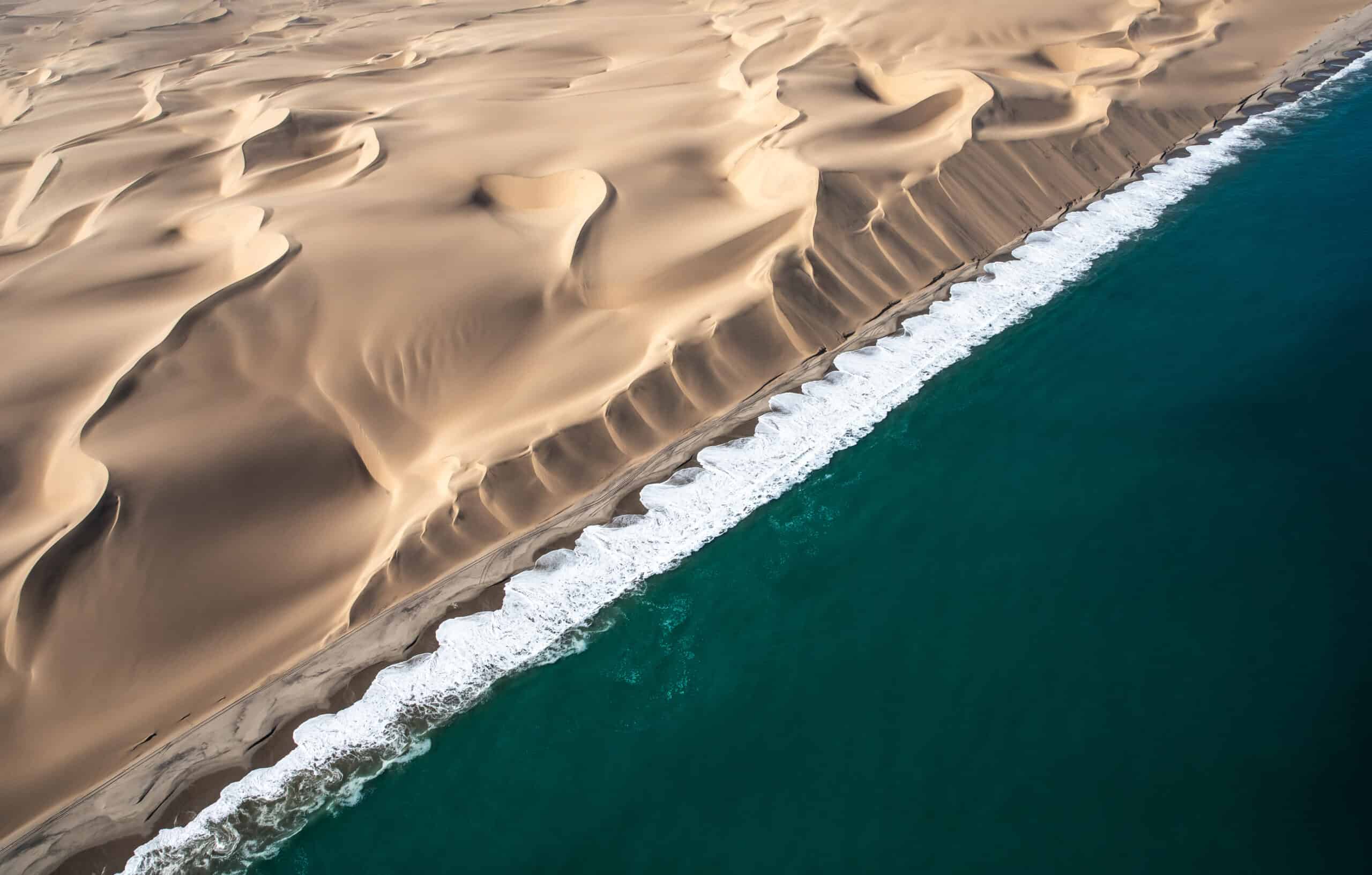
The Skeleton Coast, part of the Namib Desert in Namibia, is one of the most treacherous and mysterious coastal deserts in the world. This desolate stretch of coastline is littered with the remains of shipwrecks and whale bones, earning it the ominous name. The Skeleton Coast’s stark beauty is enhanced by its towering sand dunes, rugged mountains, and frequent fogs created by the cold Benguela Current. The area is also home to unique wildlife, including desert-adapted elephants and lions. The combination of its harsh environment, historical shipwrecks, and the eerie, fog-shrouded landscape make the Skeleton Coast one of the most enigmatic desert regions.
Black Desert (Egypt)
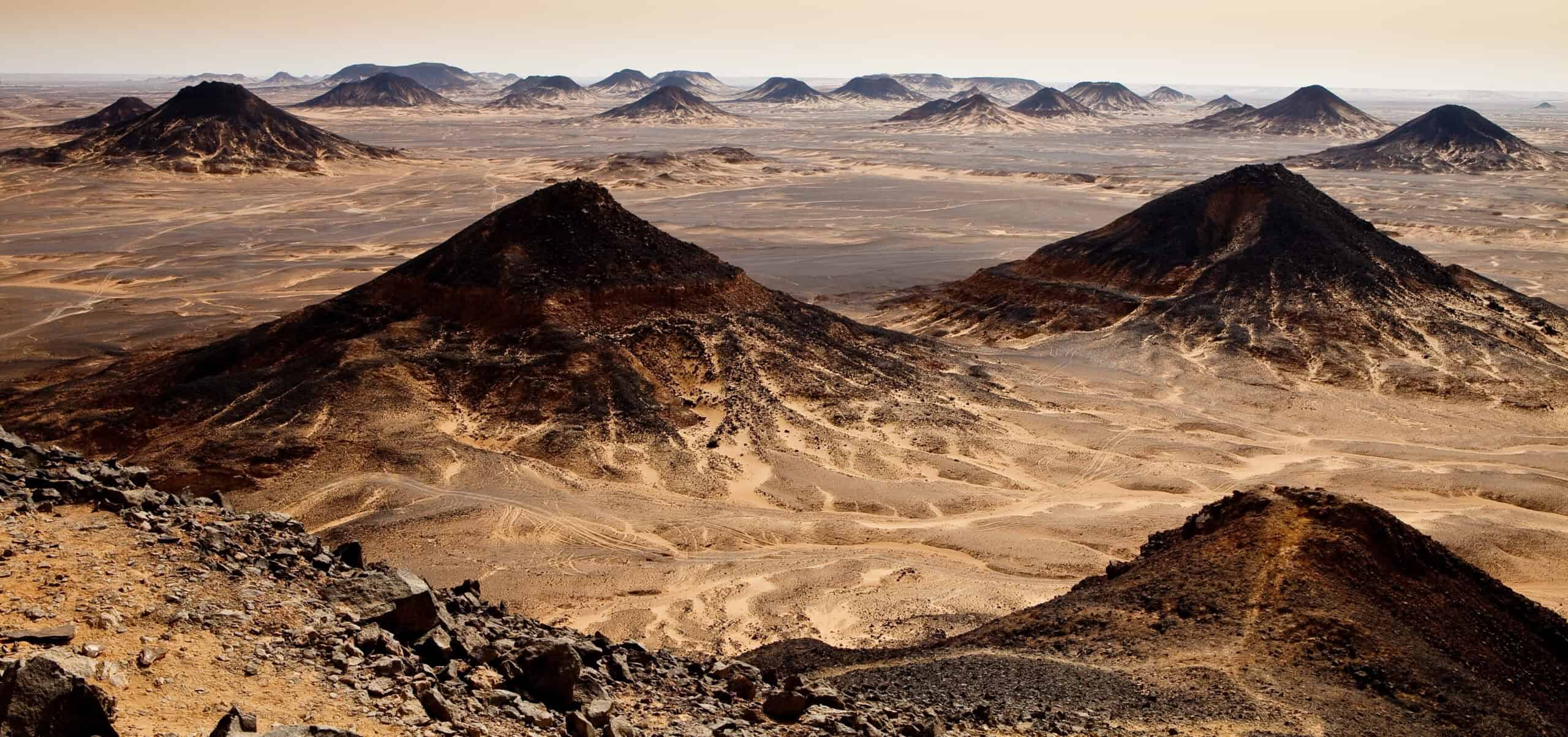
The Black Desert, located in the Western Desert of Egypt, is characterized by its dark volcanic hills and black basalt rocks that stand in stark contrast to the surrounding yellow sand. These formations were created by ancient volcanic activity, which left a layer of black rock over the desert’s surface. The landscape is dotted with conical hills and plateaus, creating a dramatic and otherworldly appearance. The Black Desert’s unique geology and the stark contrast between the black rocks and the golden sand make it a visually striking and mysterious destination. The desert’s remote location and the scarcity of visitors add to its enigmatic allure.
This article originally appeared on Rarest.org.
More from Rarest.org
17 Unsung Innovators in Technology and Computing

In the world of technology and computing, some pioneers remain in the shadows. These unsung innovators have made significant contributions that shaped the industry. Read more.
16 Strange and Colorful Fungus Species
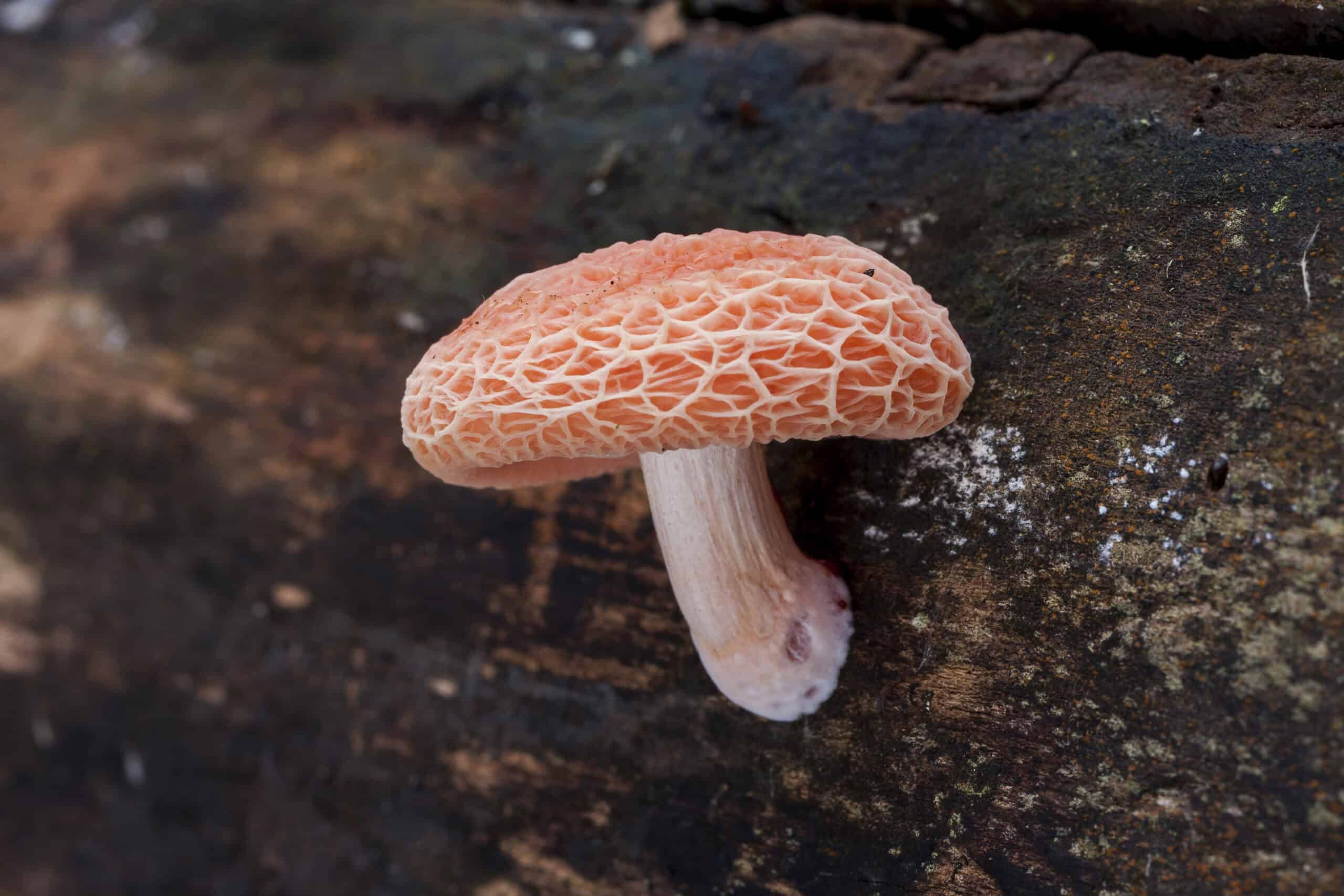
The world of fungi is full of strange and colorful species that captivate the imagination with their unique forms and vibrant hues. Read more.
11 Overpriced Items People Believe Are Too Expensive Now

In today’s world, the cost of living seems to be constantly rising, and many everyday items and services have become significantly more expensive. Read more.
